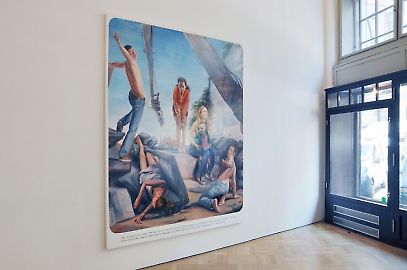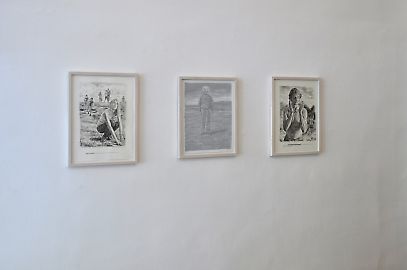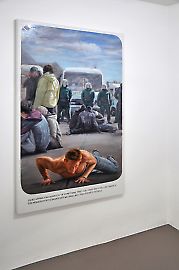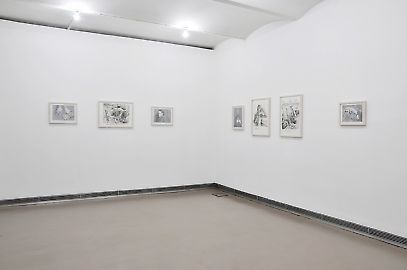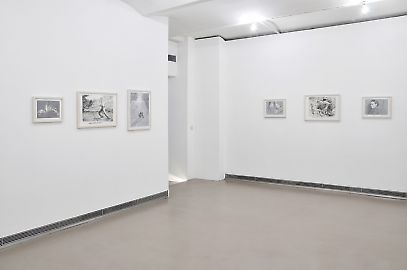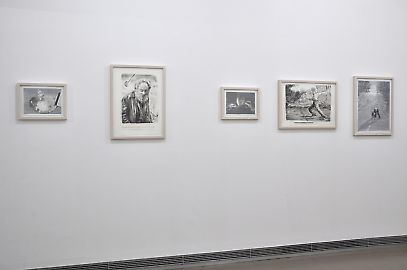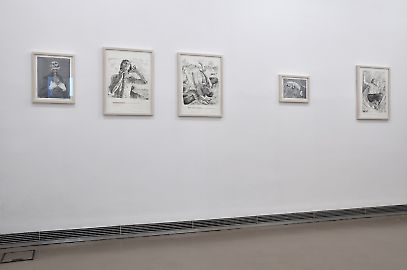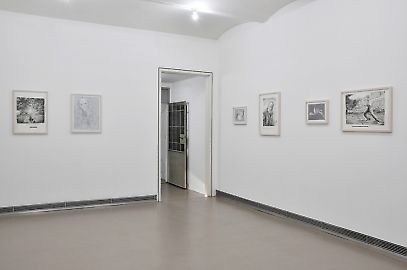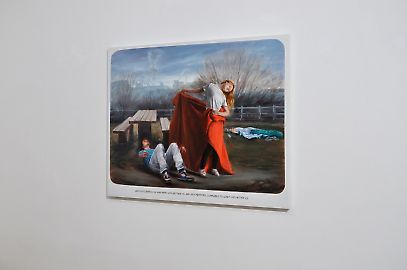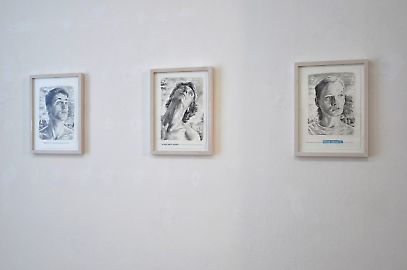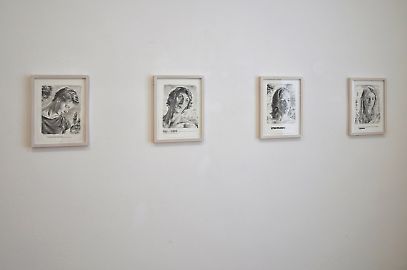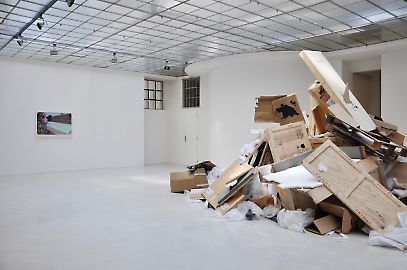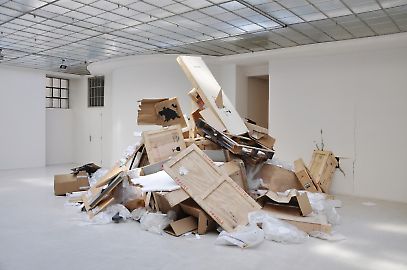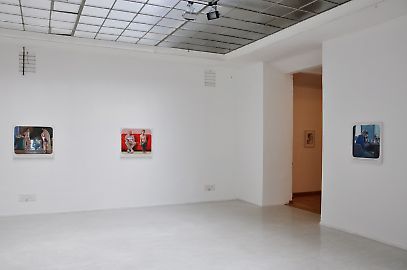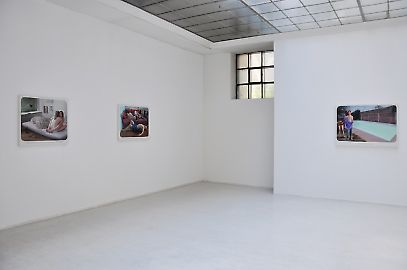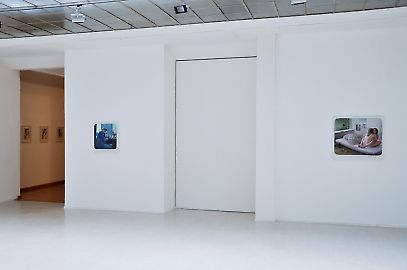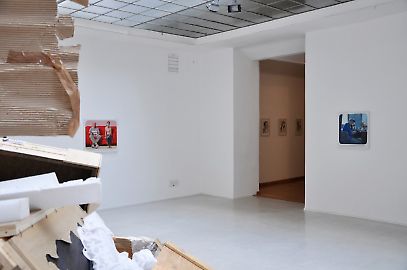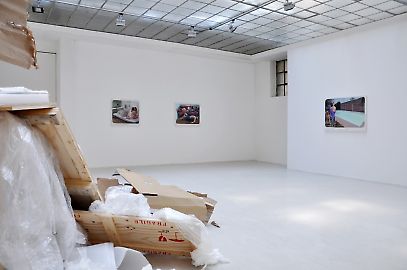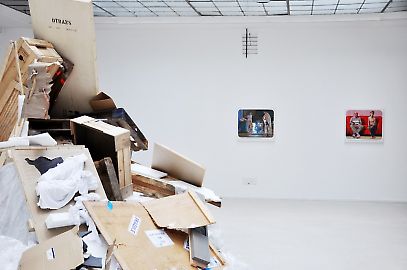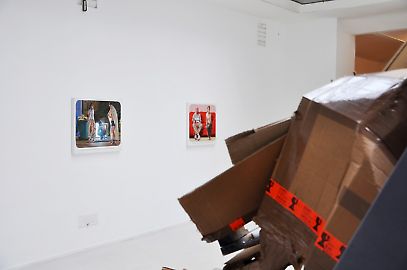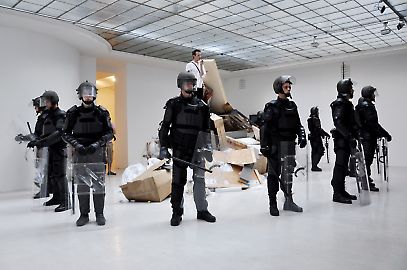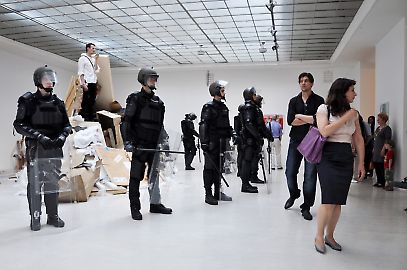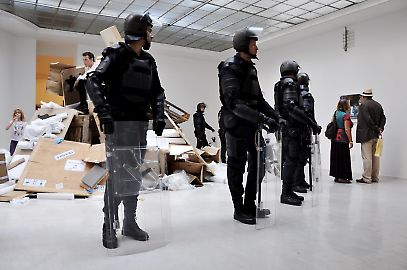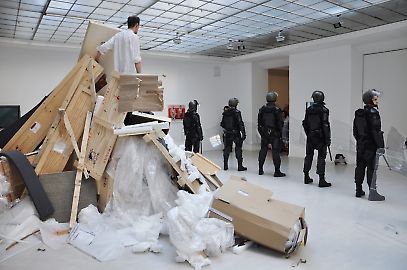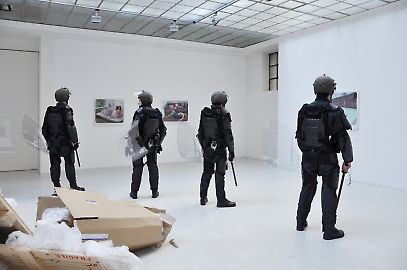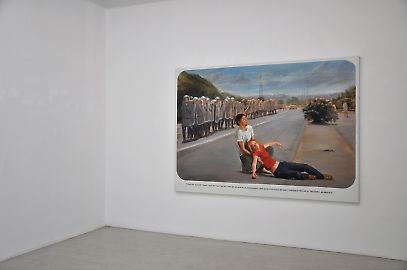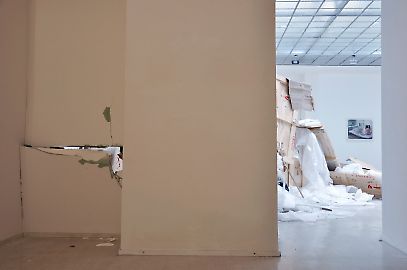Muntean / Rosenblum --
Breaking the conventions, with breaking conventions
What appears to us to be a realistic mode of depiction requires conventions. It is art’s job to break conventions to reveal the idle habits on which they are based, and this task becomes all the more difficult the more conventions there are at stake. When Muntean/Rosenblum provided excerpted texts, collaged and written by the artists themselves, which accompany an enduring memento mori as a general bass, opposing them to their images, which construct an apparently unified visual space from apparent traditions of art history, the theory of affect, and gestural and mimetic forms of pathos in counterpoint to the clichés of modern life and forms of representation, they mutually connote symbolic compositions. In this artificially created, synchronous as well as diachronic density, the hidden fissures are communicated at first unnoticeably, delayed, according to the rhetoric of an almost sentimental aesthetic of impact. The refinement of this veiling has increased with the artists’ own painterly development, in transition from flat depictions in acrylic to a perspectivistic oil painting that uses contrasts between light and dark, in replacing the figures found in the heights and depths of cultural space with their own creations, experimenting with light relations. The covering of the margins, which in the final image reveals the white canvas with round edges, can be considered an indication of the multiple, open play with illusions. Despite their affirmative character, the aphoristically constructed marginal inscriptions provide insight into the final conjured interiority, that is, based on complementary concepts:
“THE ONLY INTERESTING ANSWERS ARE THOSE WHICH DESTROY THE QUESTIONS,” “DEATH IS MORE UNIVERSAL THAN LIFE; EVERYONE DIES BUT NOT EVERYONE LIVES,” or “IT IS BETTER TO BE HATED FOR WHAT YOU ARE THAN TO BE LOVED FOR WHAT YOU ARE NOT.”
In the drawings, the collaged subtexts of found sentence components compensate for the greater unity of the color-free depiction, and only fall by the wayside when what is represented itself becomes an emblematic statement.
When at the center of the exhibition a performance, in which a vanitas text is screamed through a megaphone, and which sends the communicator of one’s own action in the dark, taking place on a barricade of gallery trash surrounded by uniformed men, freezes to form a tableau vivant, once again the futility is explored with which the representative layers are broken through towards a supposed multi-dimensional reality.
Text: Benedikt Ledebur, June 24, 2010
Translation: Brian Currid


